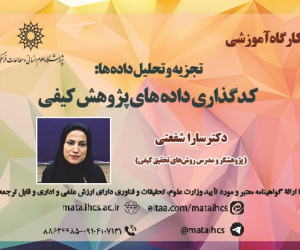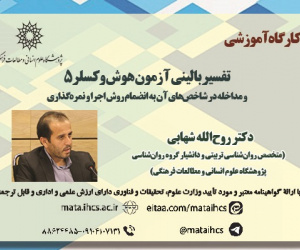قرائت منظر خیابان در تاریخ تمدن ایران (مقاله علمی وزارت علوم)
درجه علمی: نشریه علمی (وزارت علوم)
آرشیو
چکیده
خیابان از عناصر اولیه تشکیل دهنده شهر است که به دلیل تکرار شئون عملکردی آن در طول تاریخ، عنصری کلیدی در پدیدآمدن سازمان فضایی شهر، و به تبع آن، منظر شهری محسوب می شود. طی دوره های تاریخی نقش عملکردی خیابان با سایر نقش های اجتماعی، فرهنگی، اقتصادی و سیاسی آن ادغام شده و همین امر، سبب پیچیدگی ابعاد وجودی آن می شود؛ لذا این نقش همواره در طیفی بین کارکرد (دسترسی و عبور) و تجربه مخاطب از فضای شهری سیر می کند. این مقاله با تحلیل نمونه های تاریخی در شهرهای ایران از دوره باستان تا اواخر صفوی، درصدد قرائت منظر خیابان و تبیین نقش آن در شکل گیری معنای شهر است. این پژوهش در تلاش برای پاسخگویی به این سؤال است که اثرگذاری خیابان به مثابه مؤلفه ای چندبعدی، در شکل گیری وجوه مادی و معنایی شهرهای ایران قبل و بعد از اسلام چگونه بوده است؟ فرضیه این پژوهش این است که منظر خیابان در شهرهای ایران همواره آیینی بوده و نقش آن، تبدیل منظر شهر از امر قدسی به امری اجتماعی در سیر تحول تاریخ شهرهای ایران قبل و بعد از ظهور اسلام است.Reading the Street Landscape throughout Iranian Civilization
Street is a primary component of the establishment of cities. Given the continuity of its functional dimensions over time, it constitutes a key element in the appearance of the spatial organization and subsequently, of the urban landscape. The functional role of the street has been merged with its other roles, to be precise: the social, cultural, economic, or political; fact which caused the complexity of its existential dimensions. Thus, this role constantly oscillates on a spectrum between the function (access, passage) and the user’s experience in the urban space. The present paper is an essay on reading the street landscape to state its role in explaining the meaning of the city, by going through a historical trajectory around the cities of Iran from Antiquity until the end of the Safavid reign. The question of this research is How did the street, as a multidimensional element, influence the formation of the material and semantic aspects of Iranian cities before and after the emergence of Islam? The hypothesis of this research is The street landscape in Iranian cities has always had a ritual character and its role has been to conduct the nature of the urban landscape from a sacred fact toward a social one during the historical evolutions in Iran.








